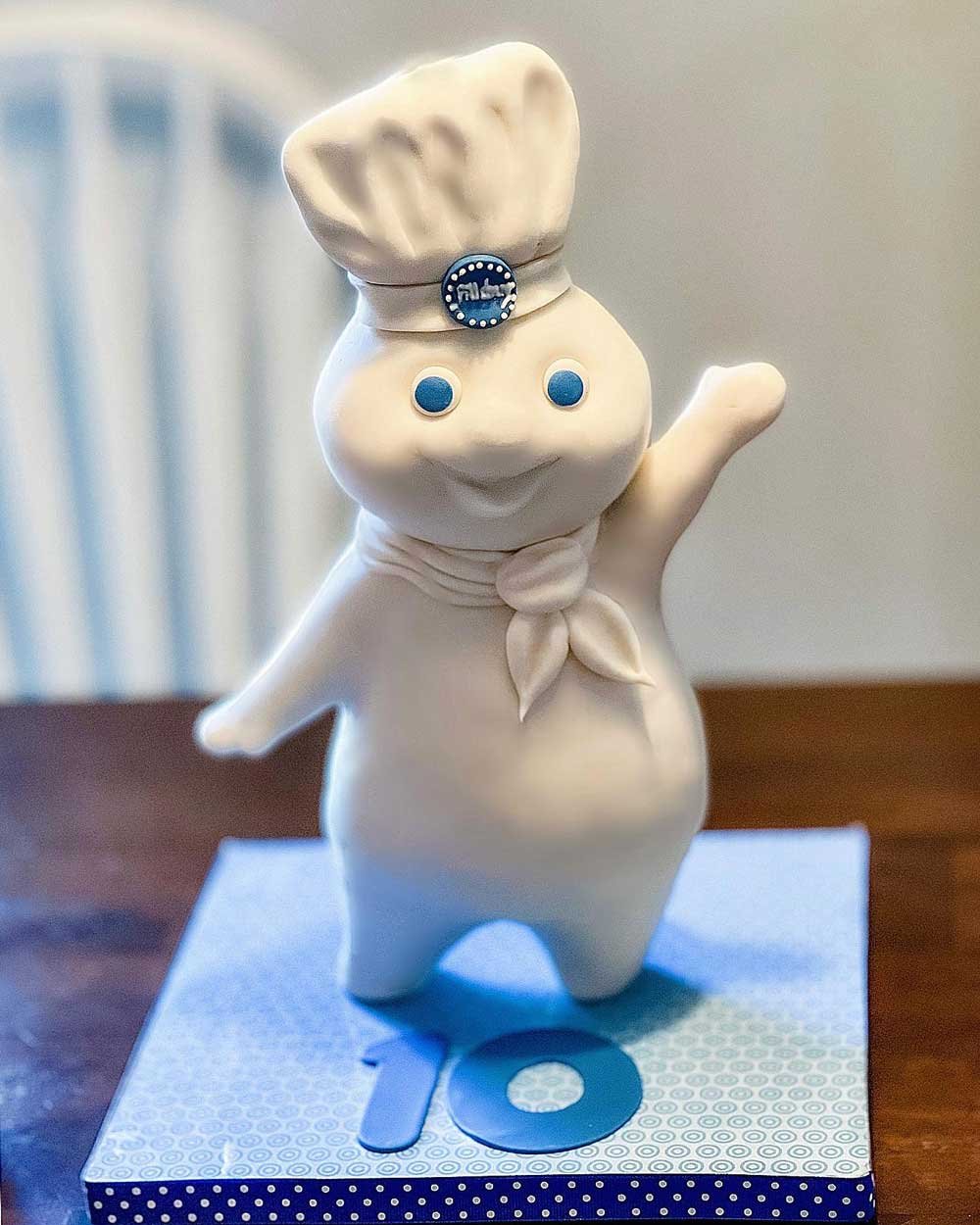My Aunt Loves the Pillsbury Doughboy. Why?
By Jake Rhodes
Growing up along the Bible Belt, one of the many sins that is culturally accepted, condoned, and endorsed is idolatry. But, this exaltation is not one of false gods or pagan spirits.
It’s more of a pantheon of pure, omnipotent evil. A syndicate of sorts, so sinister and insidious that their influence bends the minds of sweet southern biddies below the Mason-Dixon. Gets them to adorn clothing with their faces and bodies. They eat food from plates and drink Kool Aid from cups that are plastered with the watchful eyes of creatures lower than the devil himself.
First on our list made the Pale Horse bay, cower, and turn tail back to Hell from whence it came. I am of course talking about this abhorrent bird.
I spent a chunk of my childhood in a trailer park just outside of Houston––a place where poverty blooms and flowers die and the community pool is always a putrid green color. Looking back on that chapter of my life, I have many questions that remain unanswered, chief among them is why do old southern ladies love this bird so much.
Both my aunts, both my grandmothers, and every lady over 50 in the trailer park had Tweety bird yard signs, Tweety bird windchimes, Tweety bird welcome mats. When you stepped through the door of their double-wides and into the living room, you would be greeted by Tweety bird throw pillows on the couch, a Tweety bird dog bed: where a sickly, seemingly 700 year old white cur with brown crusty eyes would let out a sound that would probably be considered a death rattle by medical professionals, were it not for the fact that these dogs seem to never die.
And, of course, it isn’t just Tweety Bird. Variety being the spice of life, sometimes, if you were lucky, you’d get a Betty Boop grandma. That’s how you know she used to be a real firecracker back in the day. That one grandma that don’t play at the Sock Hop. The Pillsbury Doughboy is also an honorable mention. For younger readers who may not be aware, the Pillsbury Doughboy is a soulless, stout little homunculus type critter that giggles when you poke his belly and eats children. Jury is still out on the second one, but I believe it to be true.
Other cartoon and pop culture characters also find their way into the homes of Americans everywhere. On their coffee mugs, on the bumpers of their cars, on their graduation caps. What is the reasoning behind this? Why did my old boss, a 43 year old woman, have a Baby Yoda bobblehead that she talked to like a toddler in between work meetings?
I believe there are two things at play here. The first is purely anecdotal, but I believe is universal to some degree.
I can personally speak with some authority on the Tweety Bird and Pillsbury Doughboy phenomenon. The obsession with these characters is, in my opinion, a byproduct of certain communities in the South being mostly closed off from the ever-changing world of pop culture. The window of time in which many people in these communities engage with nostalgia is post World War II cartoons of a duck being smashed over the head with a rubber mallet.
You consume and embody that which you understand; that which is familiar and comfortable to you. VHS tapes of Disney movies, old Looney Tunes reruns, and mascots for biscuits that your mother made are characters that you most associate your childhood with. Growing up in a community that was, for the most part, mired in poverty, it was common to see a rejection of new types of pop culture. Instead, you cling to that which represents a time in your life when things made a little more sense. In this case, a sassy bird who outwits a cat with a speech impediment. And a creepy little man made of biscuit dough.
The other component at play here is a little bit more well-studied: cuteness aggression. If you’ve ever seen a little puppy, or a bunny rabbit, or in this case a Baby Yoda or Tweety bird and been overcome with the desire to squeeze its cheeks, then you know the emotional response I am referring to. Sociologists and psychologists have been studying this phenomenon for about a decade now, and there seems to be some evolutionary wiring that’s crossed upon seeing something with big eyes and chubby cheeks.
Katherine Stavropoulous, researcher at UC Riverside, found in her study that cuteness aggression is likely our brain trying to regulate itself upon seeing something so chunky and adorable “Authors hypothesize that “cute aggression” may serve as a bottom-up mechanism for regulating overwhelming positive emotions. In support of this hypothesis, [we] found that the relationship between ratings of how cute something is, and cute aggression was mediated by the experience of being overwhelmed by positive feelings.”
In other words, sweet old ladies see Tweety Bird and they are overcome with feelings of maternal obligation. And also the desire to squeeze the bird and wear it as a hat.




